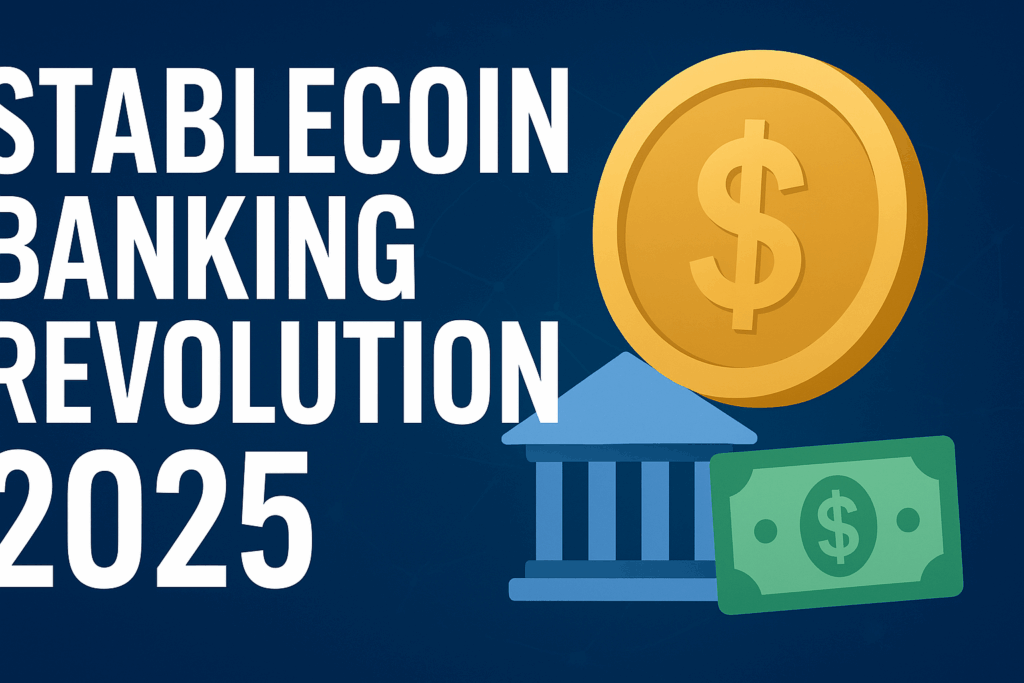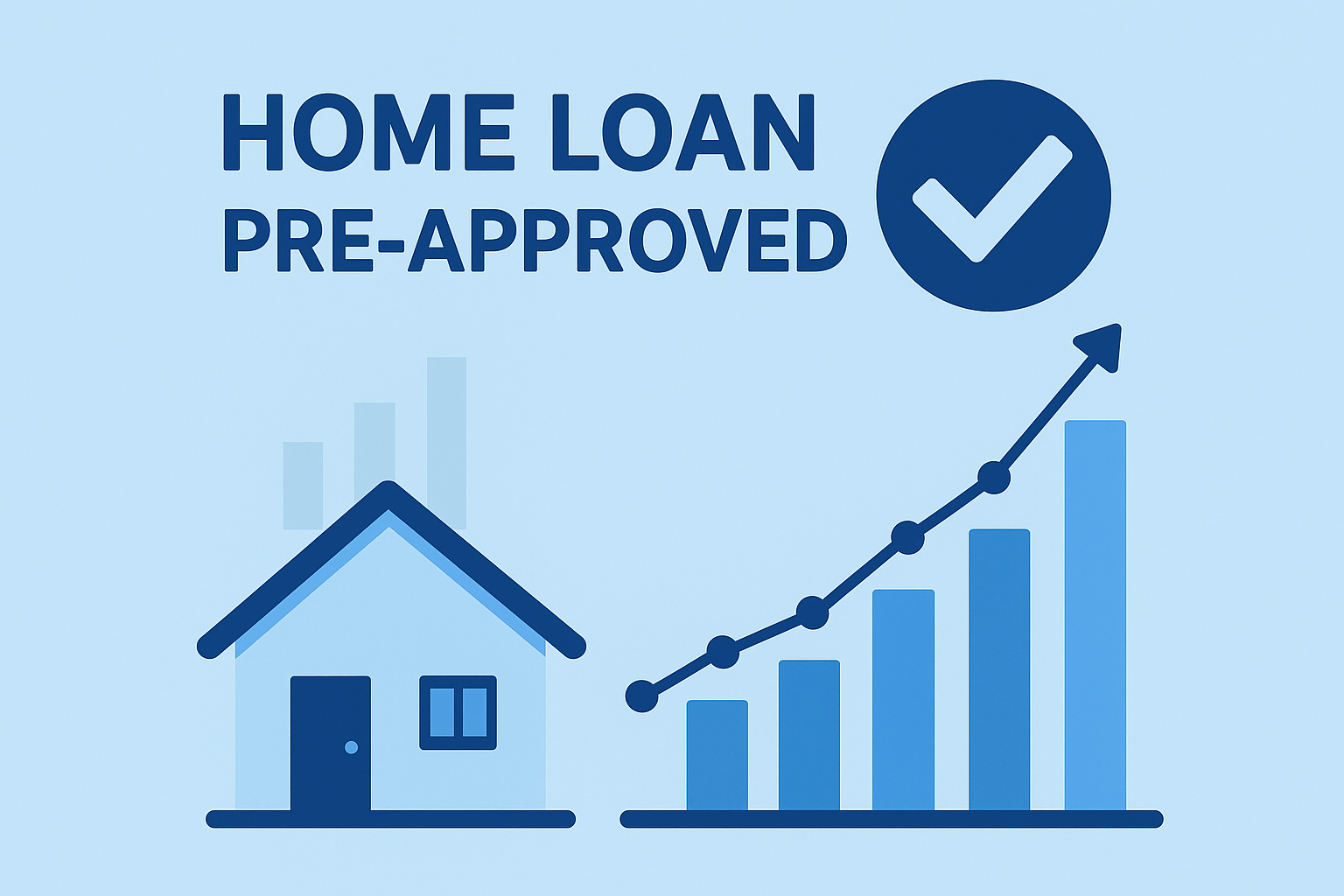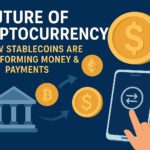Related Topics:
Personal Finance & Crypto Investing
How To Build Passive Income In 2025
Introduction: Why Stablecoins Could Change Your Wallet Forever
Imagine walking into a coffee shop in London, paying with dollars from a wallet on your phone, and the merchant in Paris instantly receiving euros—without banks, without waiting days, and without losing money to currency conversion fees. That’s not science fiction anymore; it’s the reality of the Stablecoin Banking Revolution 2025.
Stablecoins—digital currencies pegged to stable assets like the U.S. dollar or euro—are rapidly moving from the edges of crypto communities into the very core of mainstream finance and banking. In 2025, they’re not just a buzzword; they’re transforming how money flows, how businesses transact, and how banks redefine themselves.
So, what makes stablecoins different from Bitcoin or traditional money? And why should you care about them? Let’s dive in.
What Are Stablecoins and Why Are They Revolutionary?
Unlike volatile cryptocurrencies such as Bitcoin or Ethereum, stablecoins are designed to maintain a steady value by being tied to a reserve asset—like the U.S. dollar, gold, or even government bonds. Popular examples include:
- USDT (Tether) – pegged to the U.S. dollar.
- USDC (USD Coin) – backed by U.S. banks and institutions.
- DAI – a decentralized stablecoin pegged to USD.
- EURC – euro-backed stablecoin gaining traction in Europe.
The true revolution lies in how stablecoins bridge the gap between traditional finance (TradFi) and decentralized finance (DeFi). They combine the trust of fiat with the speed and accessibility of blockchain technology.
Why 2025 Is the Turning Point for Stablecoin Banking
Stablecoins have existed for nearly a decade, but 2025 marks a turning point for three reasons:
- Regulatory Clarity: Governments like the U.S. (with the GENIUS Act of 2025) and the EU are drafting clear frameworks for stablecoin use in payments and banking.
- Bank Adoption: Major banks, including JPMorgan and HSBC, are experimenting with stablecoin-backed loans and settlement systems.
- Consumer Shift: Platforms like PayPal and Visa now allow users to pay with stablecoins at millions of merchants worldwide.
Put simply: Stablecoins are no longer an experiment. They are now a banking tool, a payment rail, and a new standard for money.
Stablecoins vs. Traditional Banking: A Side-by-Side Look
Here’s how stablecoins are changing the rules of money compared to traditional banks:
| Feature | Traditional Banking | Stablecoin Banking (2025) |
| Transaction Speed | 2–5 business days (especially cross-border) | Seconds (24/7, instant settlement) |
| Cost | High fees (SWIFT, remittance, conversions) | Near zero, with minimal blockchain fees |
| Accessibility | Requires accounts, IDs, and approvals | Anyone with a smartphone can access |
| Currency Conversion | Costly and slow | Instant multi-currency settlements |
| Transparency | Closed systems | Public, verifiable blockchain records |
| Availability | Limited banking hours | 24/7/365 global access |
👉 The takeaway: Stablecoin banking isn’t replacing banks—it’s forcing them to evolve.
The Global Impact: USA, UK, Canada, Australia, France
Stablecoins are not just a U.S. phenomenon. They’re reshaping finance in multiple regions:
- USA: The Federal Reserve is monitoring stablecoins closely as alternatives to wire transfers and remittances.
- UK: Fintechs in London are using GBP-backed stablecoins for faster settlements.
- Canada: Stablecoin pilots are being tested for cross-border trade with the U.S..
- Australia: Stablecoins are simplifying international student tuition payments, cutting middlemen fees.
- France & EU: With euro-backed stablecoins, businesses are using blockchain for seamless cross-border e-commerce.
This shows stablecoins aren’t just a niche—they’re solving real-world financial bottlenecks.
Beyond Payments: Where Stablecoins Are Creating New Opportunities
Stablecoins aren’t just making payments faster. They’re opening doors to new possibilities:
1.
Remittances Without Borders
Migrant workers sending money home can avoid paying 7–10% in remittance fees by using stablecoins—families receive more money instantly.
2.
Business-to-Business (B2B) Settlements
Global supply chains are moving to stablecoin settlements to avoid delays and unpredictable FX rates.
3.
Lending & Borrowing
Decentralized finance (DeFi) platforms are offering stablecoin-backed loans with no middlemen.
4.
Savings & Interest Accounts
Platforms like Circle and Coinbase offer interest-bearing stablecoin accounts, giving users higher yields than traditional banks.
5.
Integration With CBDCs
Stablecoins are seen as a bridge toward Central Bank Digital Currencies (CBDCs), which are being tested in more than 130 countries.
Challenges Ahead: Not All Smooth Sailing
While the Stablecoin Banking Revolution 2025 sounds promising, it isn’t without hurdles:
- Regulatory Risks: Governments worry about financial stability if stablecoins replace too much fiat.
- Trust Issues: Some stablecoins (like TerraUSD in 2022) collapsed, shaking public trust.
- Bank Competition: Traditional banks fear losing control and profits, leading to resistance.
- Technology Barriers: Users in developing countries may struggle with internet access and digital literacy.
But here’s the truth: Every financial revolution faces resistance before acceptance. Stablecoins are following the same path as credit cards in the 1970s and online banking in the 2000s.
Fresh Perspective: Why Stablecoins Feel Different
I’ve personally been experimenting with stablecoin payments over the last year—buying digital tools, paying freelancers abroad, and even testing stablecoin debit cards. The difference is striking: no hidden fees, no waiting, no anxiety over whether money actually arrived.
It feels like what the internet did to information—stablecoins are doing to money.
What’s Next? The Road to 2030
Looking ahead, stablecoins could lead to:
- Bank–Blockchain Partnerships: Instead of competing, banks may issue their own stablecoins.
- Mainstream Adoption: Paying with stablecoins could be as normal as swiping a Visa card.
- Financial Inclusion: Billions of unbanked people worldwide could access money services with just a smartphone.
- Programmable Money: Smart contracts could automate rent, payroll, and even government aid using stablecoins.
The Stablecoin Banking Revolution 2025 isn’t just about payments—it’s about reshaping the entire fabric of money.
Conclusion: A Revolution You Can’t Ignore
Whether you’re a student in Sydney, a business owner in Toronto, or a freelancer in Paris, stablecoins are already making your financial world faster, cheaper, and more accessible.
Banks may resist, governments may regulate, but the momentum is unstoppable. The Stablecoin Banking Revolution 2025 is here—and it’s rewriting the rules of global money and payments.
💡 Now it’s your turn: Would you trust stablecoins for your daily transactions? Or do you still prefer traditional banks? Share your thoughts in the comments below—and don’t forget to explore our other articles on digital banking trends and the future of crypto payments.
FAQs on Stable coin Banking Revolution 2025
1. What is the Stable coin Banking Revolution 2025?
The Stable coin Banking Revolution 2025 refers to the rapid adoption of stable coins by banks, fintechs, and consumers as a new way to send, store, and manage money. Stable coins are transforming global payments by offering faster transactions, lower fees, and more financial access compared to traditional banking.
2. How are stable coins different from traditional banking?
Stable coins allow instant, 24/7 cross-border payments with minimal fees, while traditional banks often take days and charge high transfer costs. Unlike traditional money systems, stable coins run on blockchain technology, offering transparency and faster settlements.
3. Are stable coins safe to use in 2025?
Yes, leading stable coins like USDC and USDT are backed by reserves and regulated partners, making them safer than many early cryptocurrencies. However, safety depends on regulation, the issuer’s transparency, and where you store your stable coins (preferably in a secure wallet).
4. What are the benefits of using stable coins for payments?
- Faster international transfers
- Lower transaction fees
- 24/7 availability
- Reduced reliance on intermediaries (like SWIFT or PayPal)
- Greater financial inclusion for the unbanked
5. How are governments regulating stable coins in 2025?
In 2025, countries like the USA, UK, and EU have introduced stable coin-specific regulations, requiring issuers to maintain full reserves and provide transparency. These regulations aim to increase trust and prevent market collapses like TerraUSD in 2022.
6. Can stable coins replace traditional banks?
Stable coins are unlikely to replace banks entirely, but they are pushing banks to innovate. Instead of competing, many banks are exploring stable coin partnerships or even issuing their own digital currencies.
7. What are stable coin-backed loans?
A stable coins-backed loan allows borrowers to use stable coins as collateral or borrow stable coins instead of fiat currency. This is popular in decentralised finance (DeFi) platforms where transactions are faster and less restricted than traditional banking loans.
8. How are stable coins used in cross-border payments?
Stable coins eliminate the need for currency conversion and high remittance fees. For example, someone in Canada can send USDC to a family member in France, and they can convert it instantly into euros without paying 7–10% in bank fees.
9. Which countries are leading the stable coin revolution in 2025?
- USA: Strong regulation and bank adoption
- UK: Fintech companies experimenting with GBP stablecoins
- Canada: Cross-border trade pilots with stablecoins
- Australia: International tuition and business payments
- France/EU: Euro-backed stable coins for e-commerce and trade
10. What is the future of stable coins beyond 2025?
By 2030, stable coins could become a mainstream part of banking, integrated into debit cards, payroll systems, and even government aid programs. They may also act as a bridge to Central Bank Digital Currencies (CBDCs).




